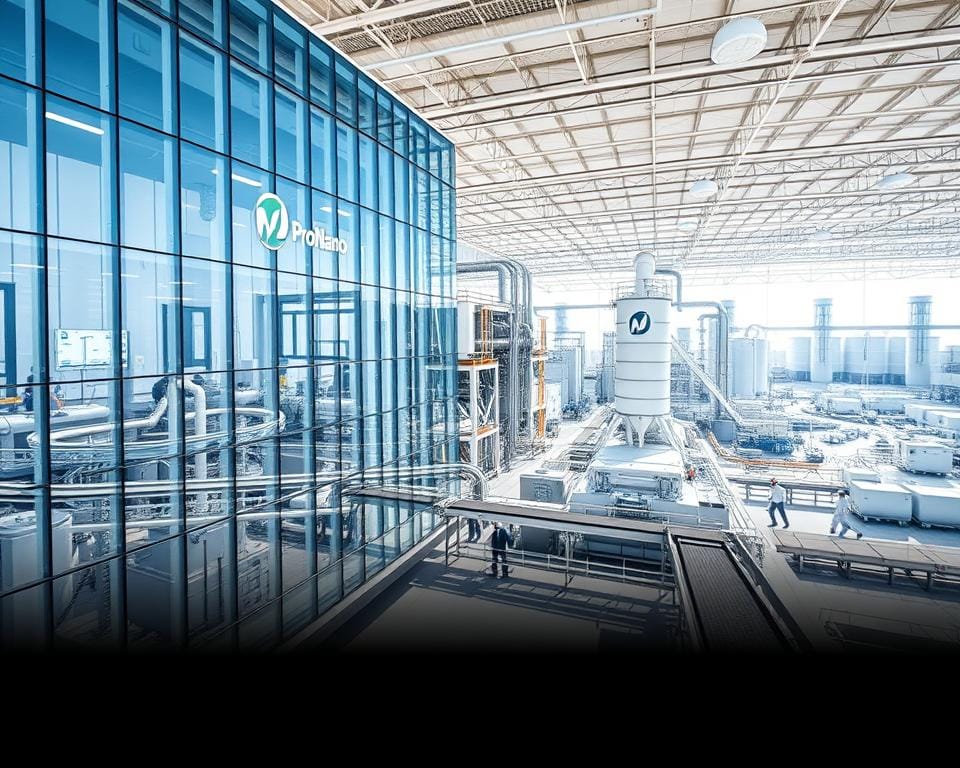
Can food processing plants meet the growing demand for safe and high-quality food products? They must also use advanced technologies and keep strict hygiene standards. Civil and MEP Design Requirements for Food Processing Plants in 2025 ,As we enter 2025, the food industry faces many challenges, like talent shortages and changing rules. At ProNano, we combine food tech and industrial design experts. Our team helps your factory or kitchen succeed. We support clients from the start to when they’re ready to operate.

Efficient design is key for running smoothly, safely, and following rules. We’ll look at the seven essential design needs for food processing plants. We’ll see how new tech, like induction heating, can boost efficiency and quality.
The Evolving Landscape of Food Processing Plant civil and MEP Design
As we near 2025, food processing plant design is changing fast. This change is driven by a focus on sustainability and digitalization. The industry is moving towards more efficient, clean, and green facilities. This shift is needed to meet strict health and safety rules. It also allows for the use of the newest technologies.

Current Challenges in the Saudi Arabian Food Processing Industry
The food processing industry in Saudi Arabia has big challenges. It needs better and cleaner facilities. Old infrastructure and a lack of digital tools are major problems. These issues make it hard to follow health and safety rules. They also make it tough to stay competitive in the market so we need all time civil and MEP Design.
Why 2025 Will Be a Pivotal Year for Food Plant Infrastructure
2025 will be a key year for food processing plant infrastructure. There will be a big push for sustainable and future-proof infrastructure. The industry will start using new tech like induction heating. It will also adopt smart automation and control systems. This will make things more efficient and better for the environment. At ProNano, we’re all about helping food processing plants. We use our knowledge in Turkey, the Gulf, and Europe to support our clients. Our skills in civil and MEP design help us tackle industry challenges. We create facilities that are both efficient and green.
7 Critical Civil and MEP Design Requirements for Food Processing Plants in 2025
To stay ahead in 2025, food plants need advanced civil and MEP Design for hygiene, efficiency, and green practices. The industry is changing fast, thanks to what consumers want and new rules. So, facilities must be ready for the future.

1. Advanced Hygienic Design and Materials
Keeping food safe from contamination is key. This means using:
- Antimicrobial materials for surfaces and equipment
- Optimized drainage systems to prevent water buildup
Antimicrobial Building Materials
Using materials that fight off germs is a big help. These materials stop bacteria, mold, and other bad stuff from growing.
Optimized Drainage Systems
Good drainage keeps things clean and safe. It stops water from gathering, which cuts down on contamination and slip risks.
2. Energy-Efficient MEP Systems
Food plants need to save energy for less cost and to be green. This includes:
- Heat recovery to use energy better
- Smart HVAC controls for better climate control
Heat Recovery Solutions
Heat recovery systems save energy that would be wasted. This makes things more efficient and cuts down on energy bills.
Smart HVAC Controls
Advanced HVAC controls manage temperature and humidity well. This creates the best environment for making food while using less energy.
3. Water Conservation and Management Infrastructure
Water is key in food processing, so saving it is important. Good water management includes:
- Wastewater treatment for water reuse
- Water recycling to use less water
Wastewater Treatment Integration
Treating wastewater on-site lets it be reused. This cuts down on the need for fresh water.
Water Recycling Systems
Water recycling systems let water be used again in the facility. This cuts down water use and lowers costs.
4. Smart Automation and Control Integration
Smart automation makes food making better and more efficient. This includes:
- IoT-ready electrical systems for real-time control
- Centralized building management systems for better facility management
IoT-Ready Electrical Systems
IoT-enabled electrical systems give real-time data. This helps with maintenance and cuts downtime.
Centralized Building Management Systems
Centralized BMS manages all facility systems. This makes things run smoother and faster.
5. Flexible and Adaptable Production Spaces
Production spaces need to be flexible for changing needs. This includes:
- Modular wall and floor systems for easy changes
- Expandable utility networks for growing needs
Modular Wall and Floor Systems
Modular systems make changing production layouts easy. This cuts downtime and supports flexible production.
Expandable Utility Networks
Utility networks that grow with production needs are key. They support growing demands without big changes.
6. Enhanced Safety and Compliance Features
Safety and following rules are very important in food plants. Key features include:
- Fire protection systems for food environments
- Emergency power and backup systems for continuous operation
Fire Protection Systems for Food Environments
Special fire systems address food processing risks. They keep the facility safe.
Emergency Power and Backup Systems
Emergency power systems keep things running during outages. This keeps production and safety going.
7. Sustainable and Future-Proof Infrastructure
Being green is important for food plants. It’s good for the planet and what customers want. This includes:
- Renewable energy to cut down on non-renewable use
- Designs that can handle climate change
Renewable Energy Integration
Using renewable energy like solar or wind cuts carbon emissions. It’s good for the planet.
Climate-Resilient Design Elements
Designing for climate change ensures facilities last longer. They can keep running even with changing weather. If you’re starting or growing a food plant, ProNano is here to help. Contact us at info@foodsconsultancy.com or +905346612625 on WhatsApp.
Conclusion: Partner with ProNano for Expert Food Facility Design
The food processing industry is always changing. At ProNano, we help you stay ahead with our expert advice and teamwork. We aim to make your project a success, from the start to when it’s ready to work.
New technologies like digital twins, BIM, and automation are changing the game. They make projects better, help teams work together, and save money. Working with us means your plant will be ready for 2025 and beyond.
Our team is here to help your business succeed. We make sure your facility follows the rules and is ready for the future. Get in touch with us to see how we can help your business grow.



